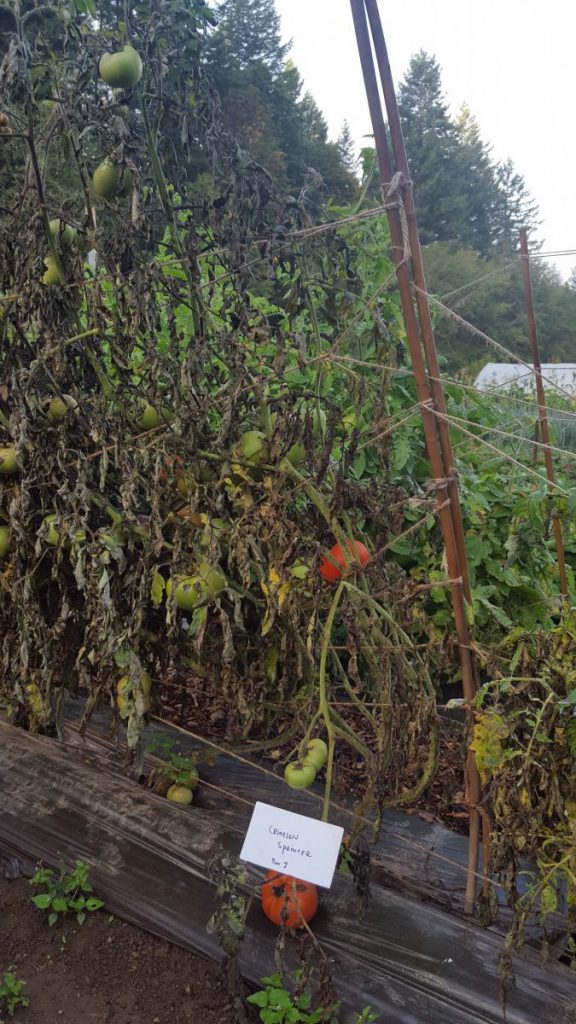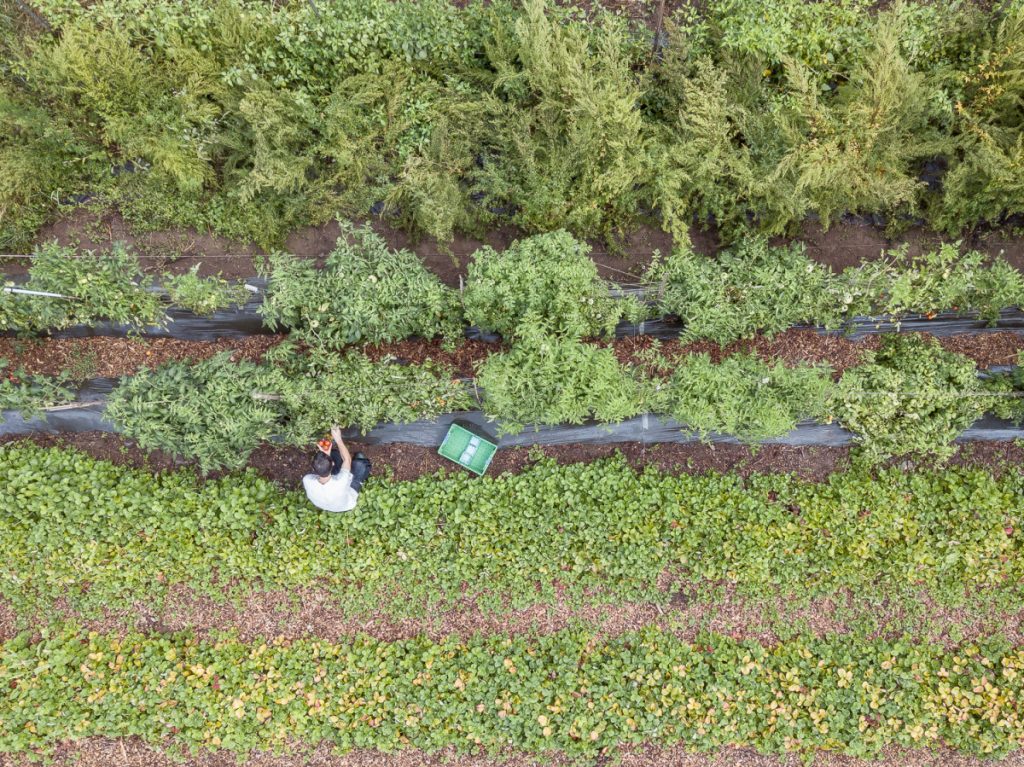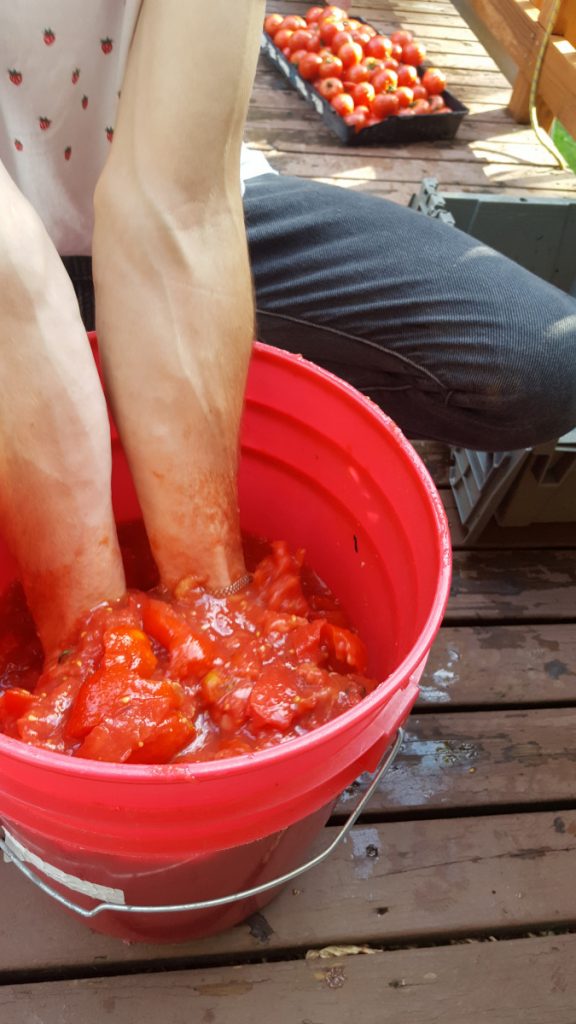Each Monday following the weekend is always a surprise. I am never sure what to expect when I walk into the field after a couple days away from the plants; you might expect that conditions change rather slowly where plants are concerned, but changes can be drastic and dramatic. As I walked into the fiel d on this fine, rainy, autumn morning, I was confronted by both life and death. For example, the Crimson Sprinter variety was nothing but a mass of dead leaves and only a few plots to the north stands a clump of green, semi-healthy plots that are only speckled with splotches of late blight cankers. Disease severity is different from variety to variety and covers the full spectrum from healthy to dead. And yet, the dead plants still had a few marketable fruit hanging from the branches.
d on this fine, rainy, autumn morning, I was confronted by both life and death. For example, the Crimson Sprinter variety was nothing but a mass of dead leaves and only a few plots to the north stands a clump of green, semi-healthy plots that are only speckled with splotches of late blight cankers. Disease severity is different from variety to variety and covers the full spectrum from healthy to dead. And yet, the dead plants still had a few marketable fruit hanging from the branches.
This week was harvest week 4. I had mentioned last week how I wouldn’t be surprised if today was to be one of the last harvests of the season but I was pleasantly surprised with the amount of marketable fruit that was ready for me today. There are many varieties that are handling the on-set of Late Blight rather well and I expect to make it through a few more harvests before they all melt away. But then again, everything could shift in a matter of a few moist evenings and cut the season short, and this is another example of why farmers need to be ready for anything.
I walked out of the field with 124lbs of marketable tomatoes, this harvest surpassing the rest. The issue at this point is how to use the exorbitant of tomatoes that I am bringing home. Granted I have to have three tomato tastings over the next month, but that will only leave a small scratch on the surface of my archive. One use for the tomatoes that I have begun experimenting with is a Conserva Cruda di Pomodoro or a raw tomato preserve. Using the tomatoes that have gone soft or succumb to mold, a fermented and cured tomato concentrate is created over a 7-10 day period. I have enjoyed breaking into the world of ferments and I am quite excited to try this version of the classic tomato. In addition to the cruda, I have been eating an abundance of tomatoes and giving many of them away as gifts, only requesting feedback on how the tomato was perceived.
As harvest and data collection continue, I have begun the construction of my scientific poster that I will be presenting in less than a month. Now that I have nearly finished an entire growing season with these tomatoes, I am enjoying the time of putting the whole project into perspective. In the mean time, go out and enjoy a tomato or two and thank a farmer for farming.



Leave a Reply